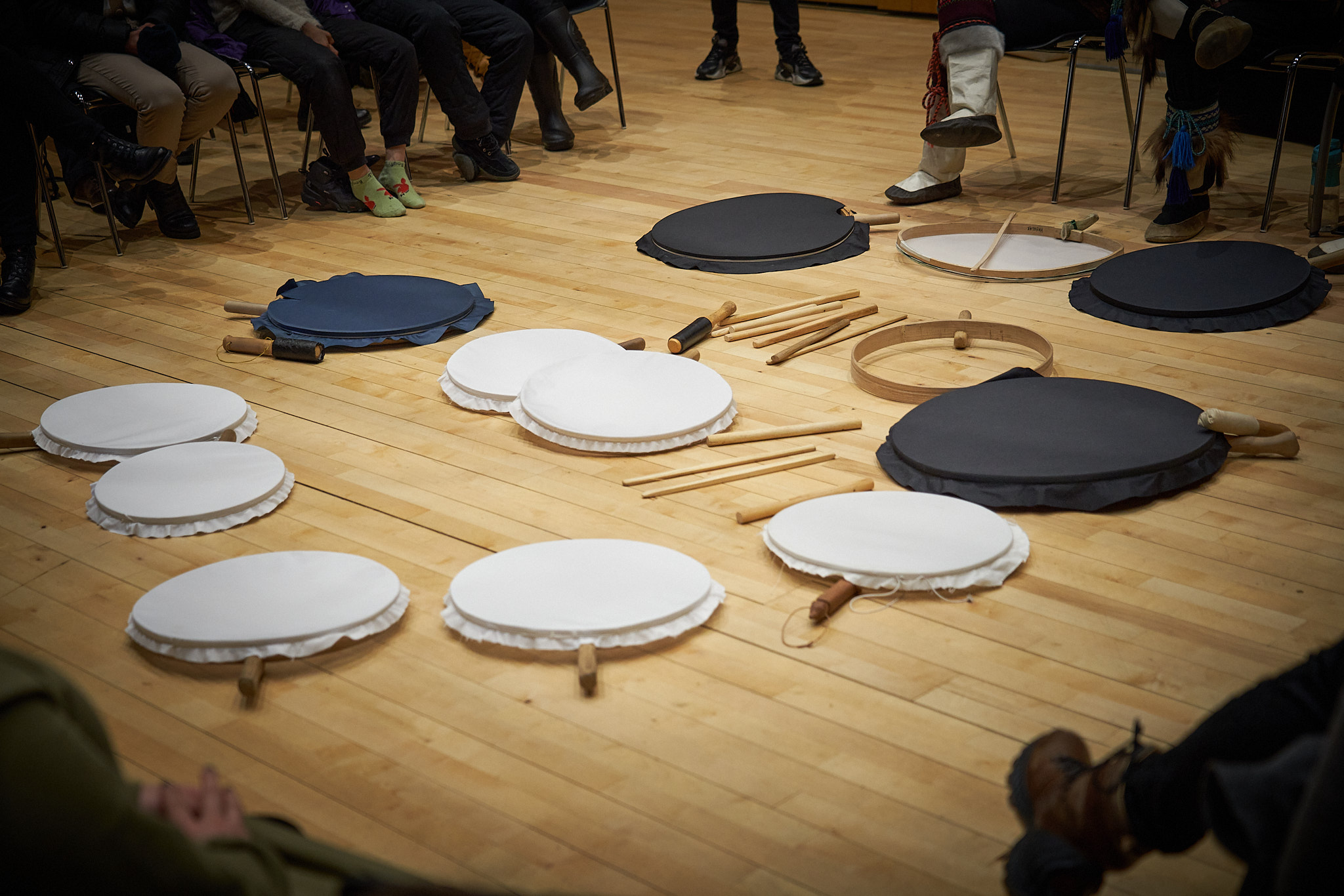
Katuarpalaaq – The sound of drums
Katuarpalaaq is a drum dance festival, which was organized by Katuaq between the 21st and 25th of March 2022. During the week, people could come and see drum dancers from Canada, Alaska and Greenland. Here you can read more about what the week with the sound of the drums offered.
Open mic – with drum dancing and throat singing
To start off the week, a stage was put in place in the middle of Katuaq’s foyer. Curious and excited people streamed in, and the only thing one could hear was the sound of chairs scraping along the floor, and a waterfall of talk. After a while, Katuaq’s director Arnakkuluk Jo Kleist went up to the middle of the stage. A welcome and thanks later, it was finally time. Mumerneq. Open stage drum dance.
They haven’t had that many opportunity to meet each other. The Arctic drum dancers are scattered. You can find them in Alaska, Canada, Greenland and Siberia. The distance is long, so it is not always easy to meet. They usually only meet at ICC arrangements (Inuit Circumpolar Council). So, the fact that they could meet for a drum dance event and show what they can do with their diverse drum dances to their sibling countries, was a breath of fresh air.
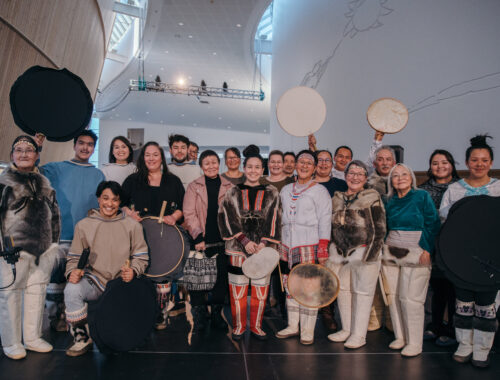
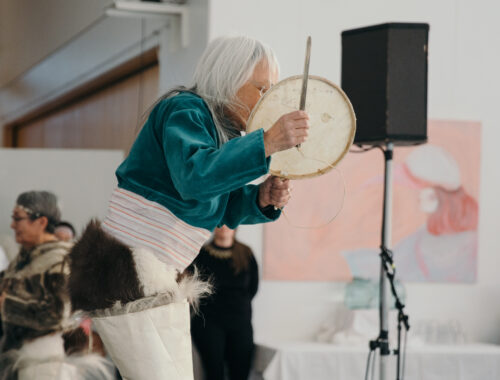
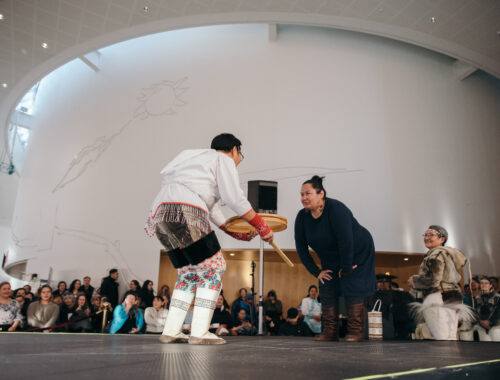

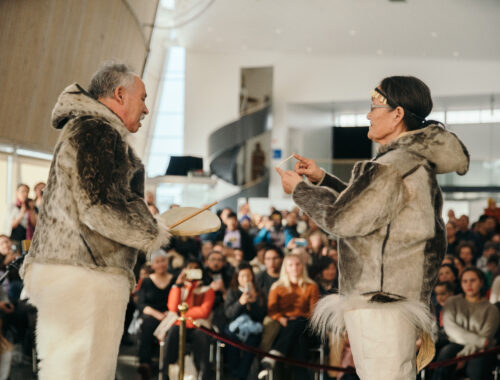

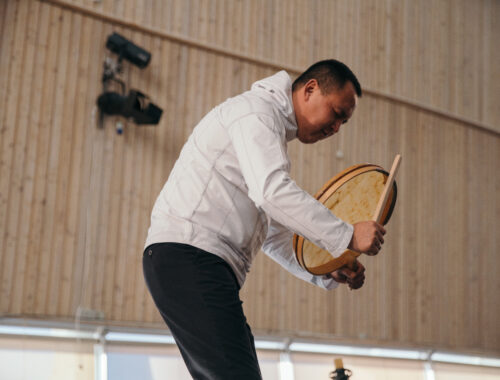

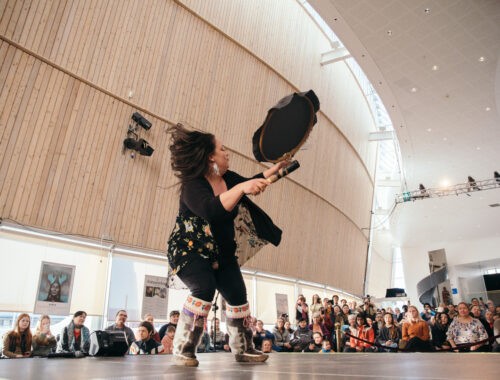


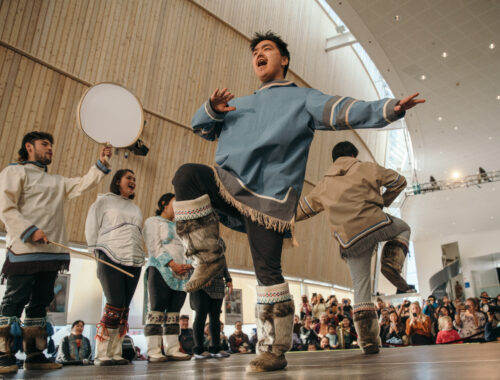
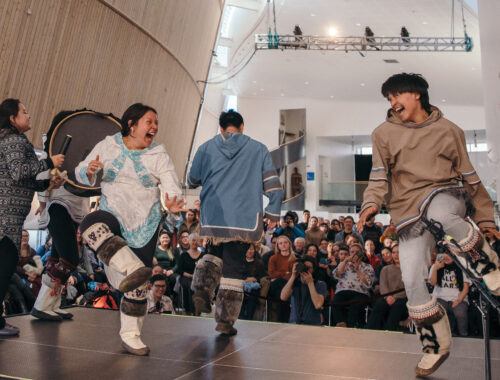
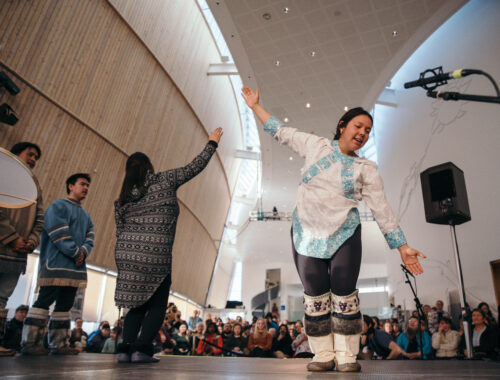
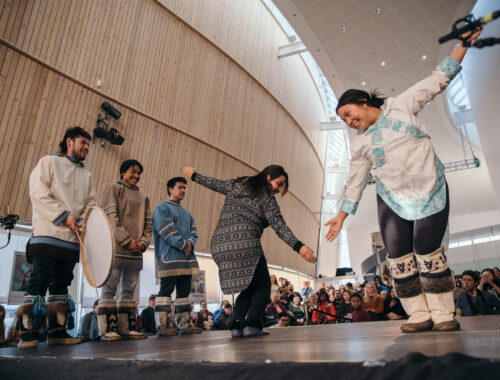
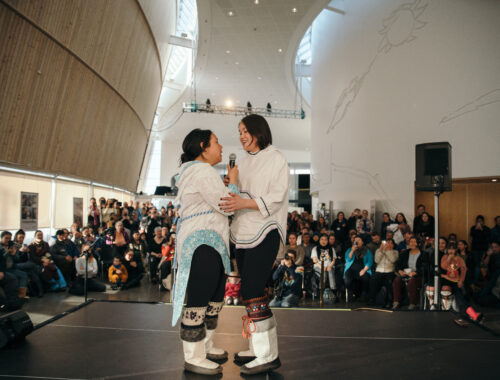
Starting with a bang
One by one, the various drum dancers come up on stage, showing what they can do.
The drum dancers on stage come from Canada and Greenland. Here you can see both the differences and similarities between their forms of performance – and their drums.
We see the Greenlanders with their round drums of driftwood and reindeer skin, as well as their drumsticks of reindeer antlers. The Greenlandic drum dancers come from East and West Greenland. Nuka Alice Lund is from Sisimiut. In addition to participating in the activities, she is also a tour manager. Mikkel Bianco and Karoline Josvassen are from Tasiilaq. Inukitsoq and Genoveva Sadorana are from Qaanaaq, they performed as a couple – and performed an old performance, which is performed by husband and wife in Qaanaaq. Another drum dancer from Greenland was Kuka Fleischer from Nuuk. The last from Greenland were the guest artists from Inngertartut Peqatigiiffiat, Angutinnguaq Johnsen, Hansine P. Rasmussen, Pia Ellebæk Fleischer, Tuperna Larsen and John Peter Rasmussen-Petrussen.
The Greenlandic drum dancers performed more vocally than their Canadian counterparts. They did not move so much around the stage but swayed with their body and arms as they hit their drums. In addition, their voices resounded and filled the foyer with the melodies, where both the audience and the rest of the drum dancers also filled with harmonies throughout their performance.
Angutinnguaq Johnsen from Inngertartut Peqatigiiffiat performed with strong vocals, which he performed using his drum as a kind of amplifier. In addition, he also acted with his face, by making funny grimaces throughout his number. It made the laughter fill the space in line with his singing and a few drumbeats.
The Canadian drum dancers showed us forms of performance that filled the entire stage. The drums they brought looked different than what you often see, especially Greenlanders, use. Their drums were larger and resounded deeper in the room than their Greenlandic counterparts. One could feel the deep sounds all the way in the body every time they hit their drums, followed by strong vocals. Their drums were covered with fabric instead of skin. Their drumsticks were also not made from antlers. They were of wood and came in various forms. We will come back to this later, but first. The Canadian drum dancers came from Iqaluit. It was Tooma Laisa, Keenan Carpenter, Leanna Wilson, Jerry Laisa, Shelton Nipisar and Sandi Vincent who arrived. Sylvia Cloutier is also from Iqaluit, but also from Montreal.
Sylvia Cloutier chose to perform a few times. She did not sway as the Greenlanders did. She performed arm movements that filled the entire stage as she jumped and moved her body from side to side. Her drum was one of the larger drums. The drumstick was wider with the top covered in fabric. Her voice filled as much as her drum did. One could not help getting more energetic from seeing her there on stage.
Unfortunately, the drum dancers from Alaska could not make it to the first events of the week. It was Wilton “Maksi” Charles and Byron James J. Nicholai who should have participated. However, they managed to arrive to the last event.
You can watch the streaming of Mumerneq on Katuaq’s Facebook.
Workshops and pop-ups
Katuarpalaaq is about unity between drum dancers. It includes practicing the drum dance together and learning from each other. In connection with this, there were also workshops from Tuesday to Thursday, which focused on explaining what the different forms of drum dancing from Greenland and Alaska were about.
– Qilaatersorneq, Inuit drum dancing and singing, have recently been inscribed on UNESCO’s representative list of intangible cultural heritage, and we should take this opportunity to celebrate with Nunatta Katersugaasivia Allagaateqarfialu, says Katuaq’s director, Arnakkuluk Jo Kleist.
Tuesday featured Greenlandic drum dancing. Wednesday should have been Alaskan, but it was then moved to Saturday as they had not arrived yet. Finally, one could attend the Canadian / Nunavut drum dance workshop on Thursday. For the workshops, people could both learn and see how the various Inuit drum dancers used their drums. As well as what tricks they use and what kind of dances they have.
For Sandi Vincent, drum dance means reflection. Songs that carry words of joy and celebration, of sorrow and longing, and of worry and fear; they carry our language, thoughts and emotions.
– Drum dance is the beat, that everything flows through. The whole body expresses it. For me, drum dancing is a means to experience and share language, Inuit Qujimajatuqangit and stories. I feel lucky that I was able to experience and perform with other drum dancers. I was able to appreciate the different styles, traditions and songs of the regions and artists. Everyone has something to share and learn, and there was mutual respect and passion for drum dancing, says Sandi.
Sylvia Cloutier mentioned that it is important for Inuit to come together and share their knowledge with each other and the outside world. Because throughout her childhood, drum dancing was not so widespread at their home in Nunavik. Missionaries had forbidden their grandparents and parents to sing and dance traditionally. However, her generation was more curious to know more about their traditions, so they spent more time with their grandparents, and got them to talk about their traditions.
– All the elders who taught me throat singing are no longer with us. So that makes my generation the oldest that can pass on our traditional songs to the new generations, says Sylvia.
In addition to workshops, there were also pop-ups. The drum dancers also gave a short performance in Nuuk Center on Tuesday afternoon. Then you could also listen to the choirs Tasiilamiit Inngertartuaqqat and Kangiata Akisuanera Erinarsoqatigiit, who are both from East Greenland. They performed briefly for lunch at Katuaq’s café, Cafétuaq. Here you could hear beautiful choral songs, the sounds of which were carried around by the acoustics of Katuaq.
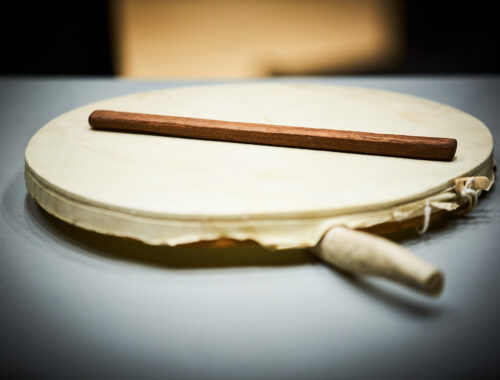
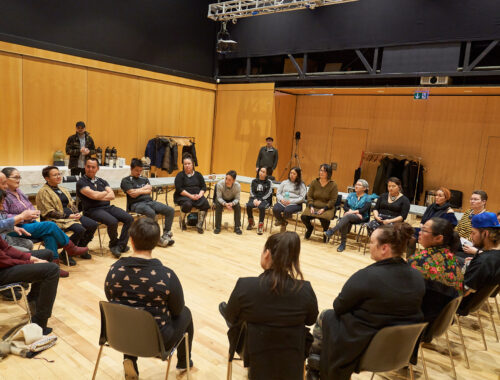
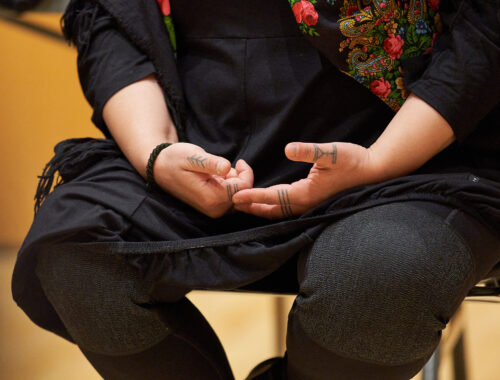
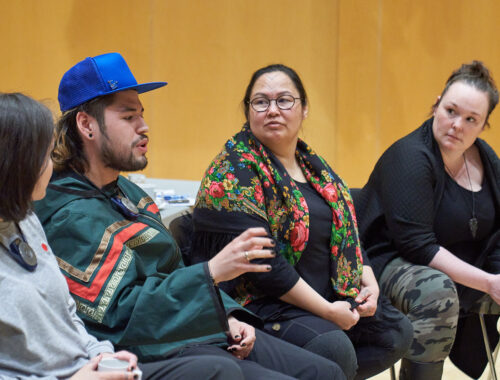
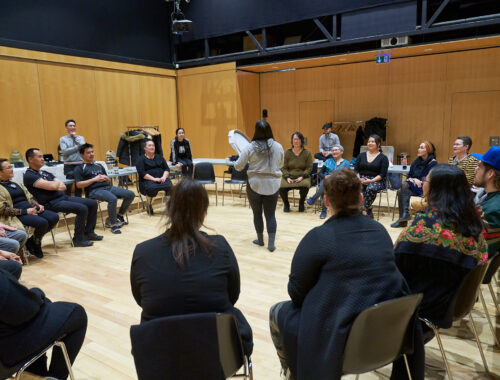
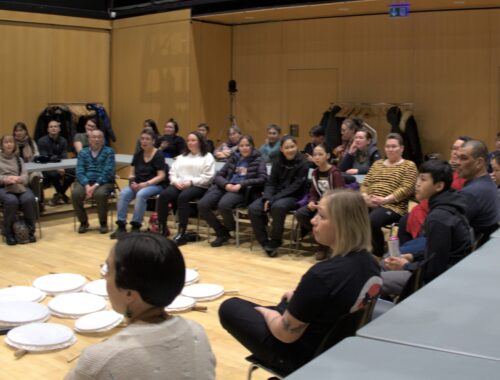
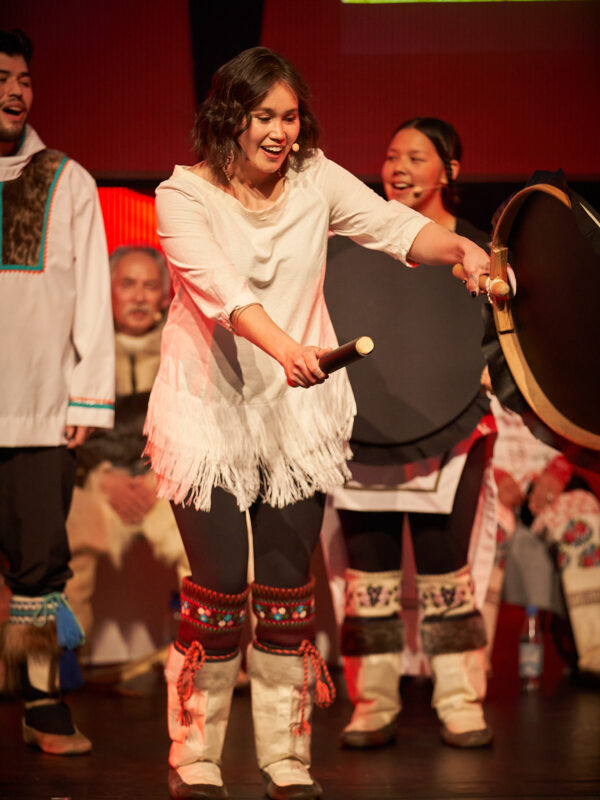
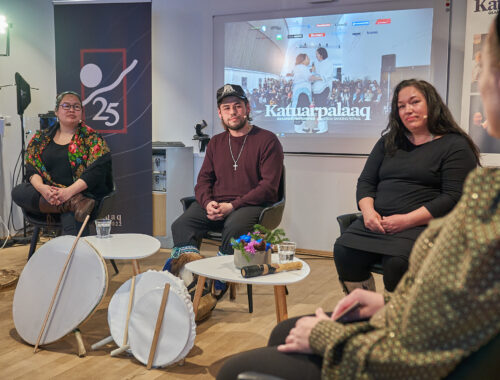
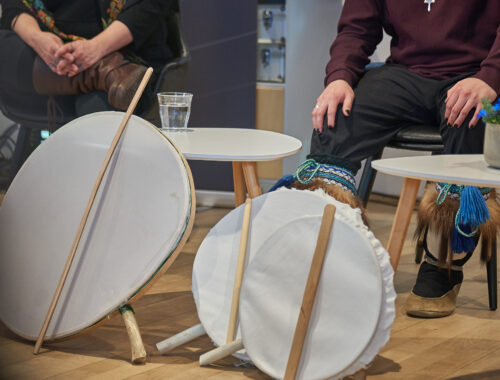

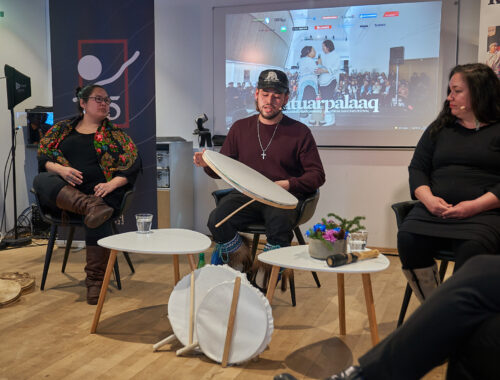

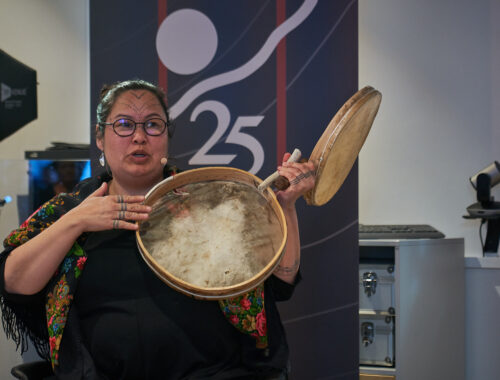
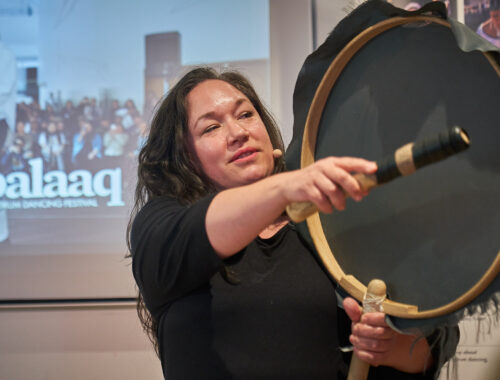
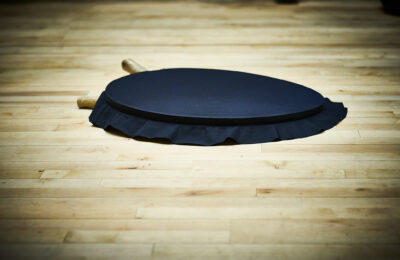
A conversation about the future of traditions
On Wednesday, March 23rd, time was set for a panel debate in Katuaq’s Friendship Hall. Here, the drum dancers Nuka Alice Lund from Sisimiut, Sylvia Cloutier from Iqaluit / Montreal and Keenan Carpenter from Iqaluit participated, together with Katuaq’s director Arnakkuluk Jo Kleist as moderator.
Throughout the panel debate, there was talk about how the interest in drum dancing started for each of the participants. The answers were different, but similar in a way. For Sylvia, it was the interest in getting to know one’s cultural heritage. For Nuka Alice, it was a chance she took – but also to be able to bring drum dancing back to the West Greenland areas. For Keenan, it was a backwards pass. Instead of the tradition going from the older to the youngest, it was the youngest (Keenan’s sister) who took up the tradition, after which Keenan started, and eventually his mother.
The drum dancers also showed their different drums to the audience and talked briefly about what they were made of and what story they had with them. The panel debate lasted an hour, but the hour passed before one knew it.
Sylvia also talked about her old friend, who taught her most of what she can do. Phanuelie Palluq. He passed away over a decade ago, but Sylvia still dances the way he taught her. That way he is still alive.
– Our drums are called ‘qilaatit’, and the way I see it is that they are the instruments of heaven, because heaven in our language is ‘qila’. So, we sing and dance about our nature, about our troubles and about our love, says Sylvia.
You can watch the streaming of the panel debate on Katuaq’s Facebook.
Ending with a bang
Friday came and brought the big Katuarpalaaq Show 2022.
The one-and-a-half-hour-long event showcased the different drum dancers in their own ace, but also mixed drum dancers from different regions in an interplay that paved the way for a composite performance that you do not often see. Here you could see a mix of Inuit dance from Canada and Alaska with vocals from the Greenlanders. Of course, also vice versa. Where the Canadians cast their voices for the Greenlandic drum dancers.
For the performance, one could also experience something of a shock when a couple of the drum dancers left the stage and reappeared between the audience to give a masked dance in terrifying costumes and face painting.
The performance ended with a round where the drum dancers performed with their drums one by one. Here one heard different forms of drum dancing to a simple melody and rhythm.
– I felt proud of the performance we made. It felt far too early to separate from the other artists. I wanted to keep learning from and with them. It was really nice to connect with other Inuuqatiik who also share stories and emotions in drum dancing. I feel very proud, says Sandi Vincent at the end.
Then the director of Katuaq, Arnakkuluk Jo Kleist, said thank you to the drum dancers and the audience before everyone started leaving Hans Lynge Salen with an experience they will never forget.
You can see more photos on Katuaq’s Facebook.
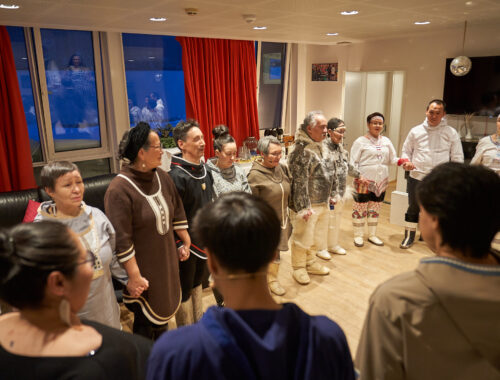
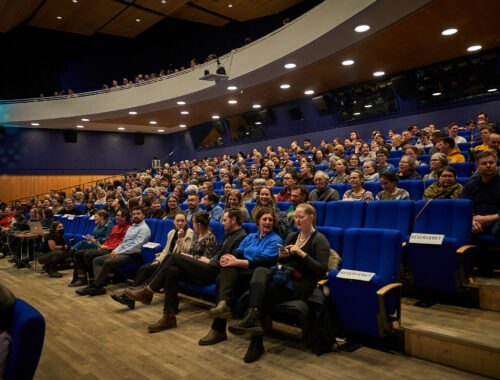
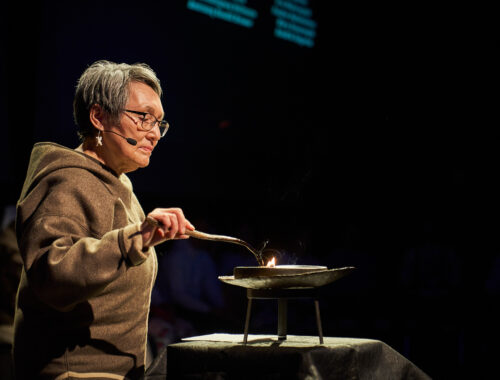
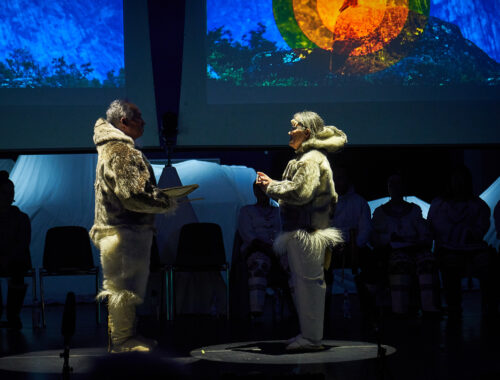
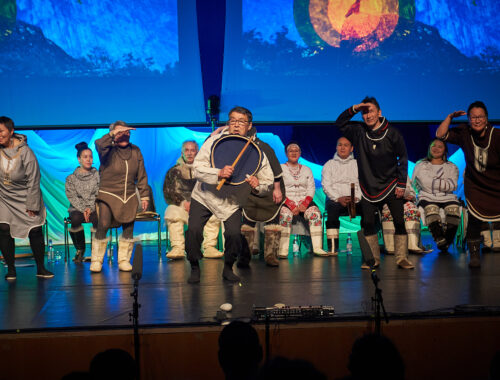


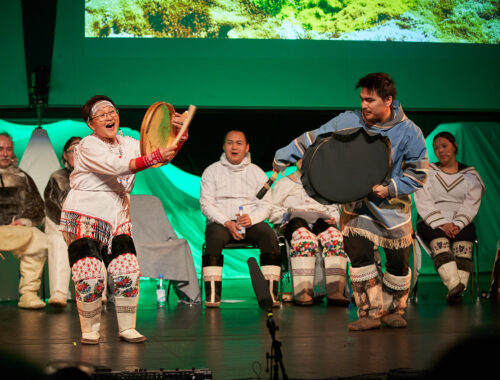
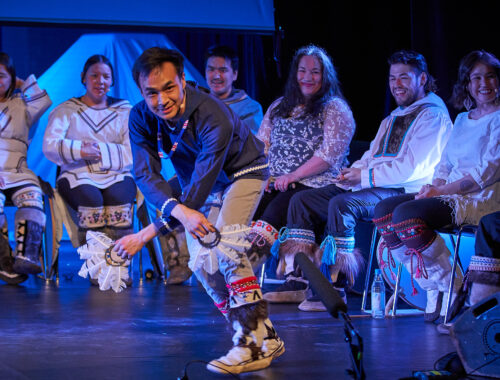
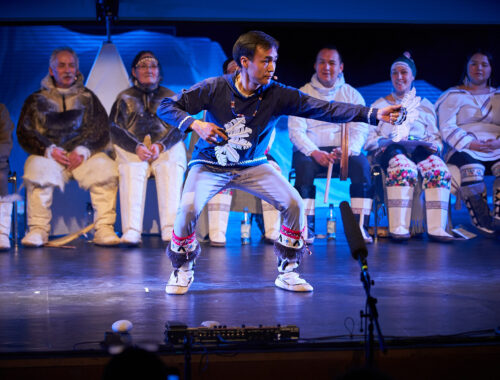
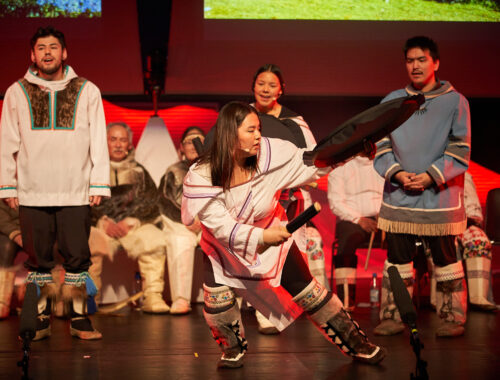


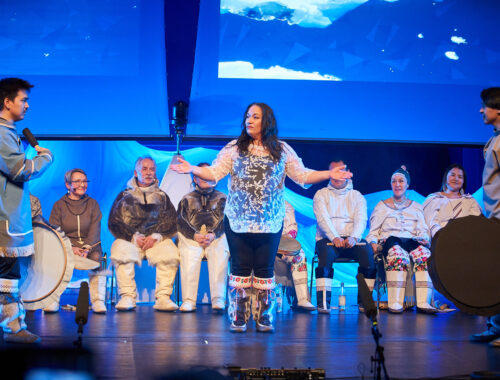
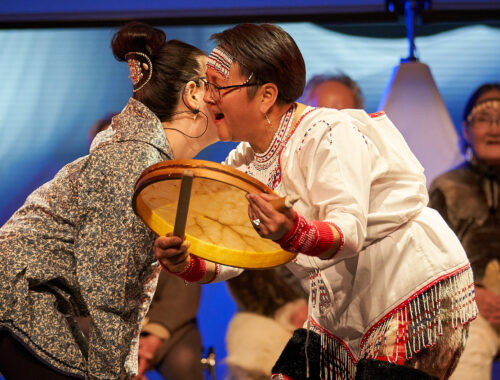
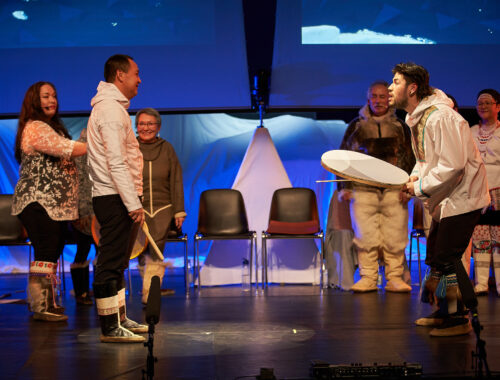
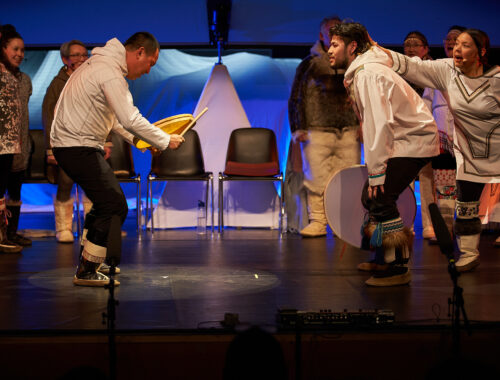
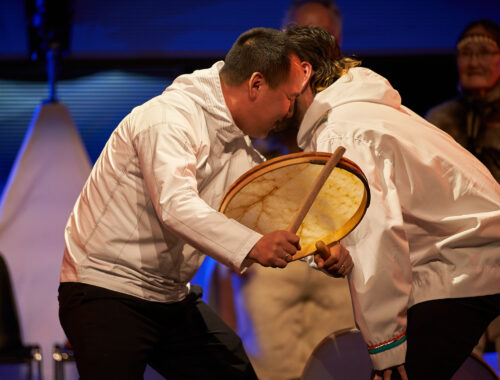
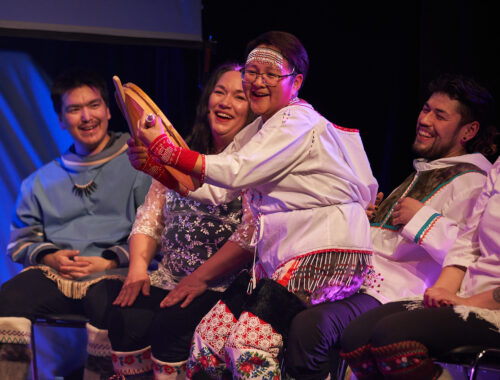
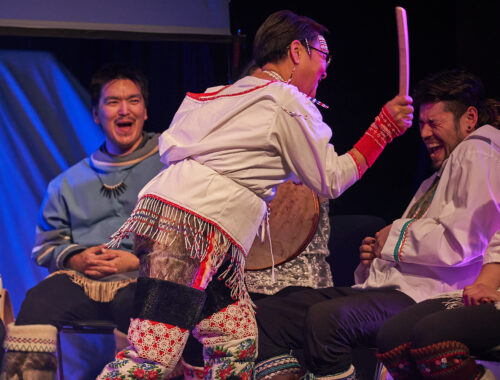
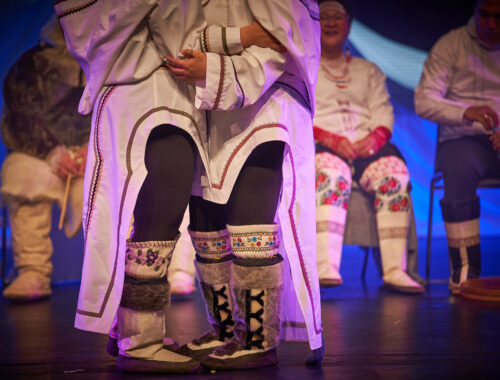
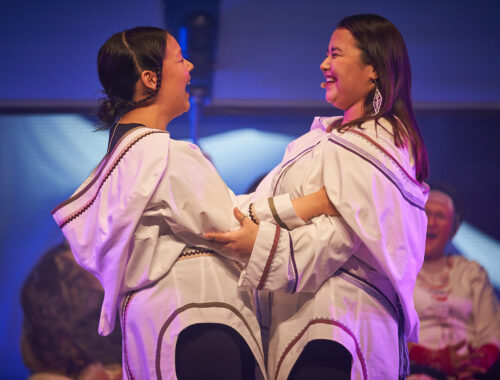

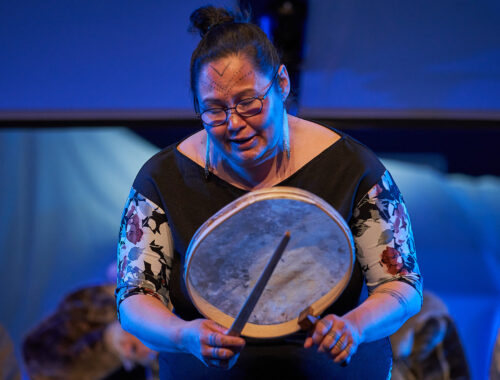
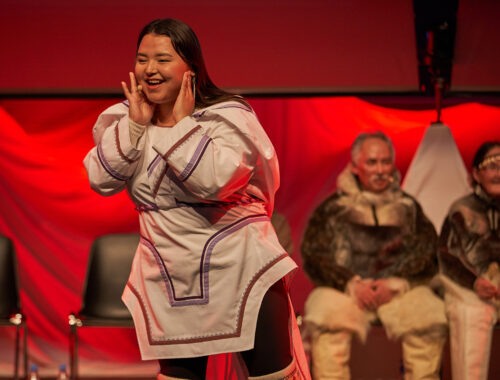

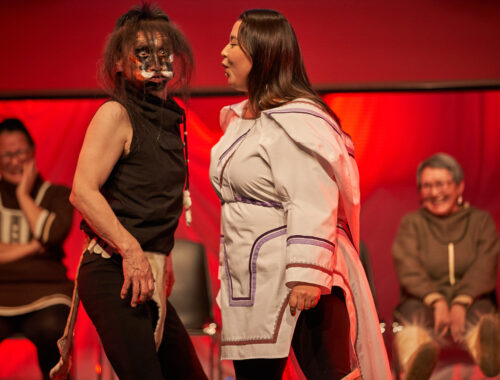
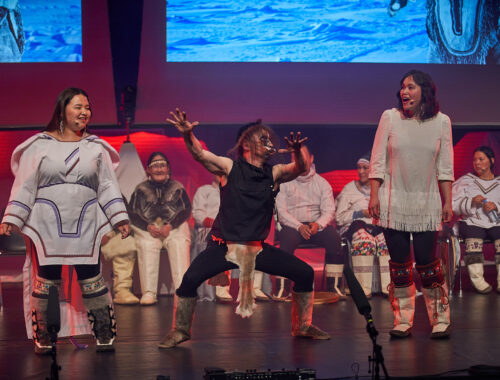
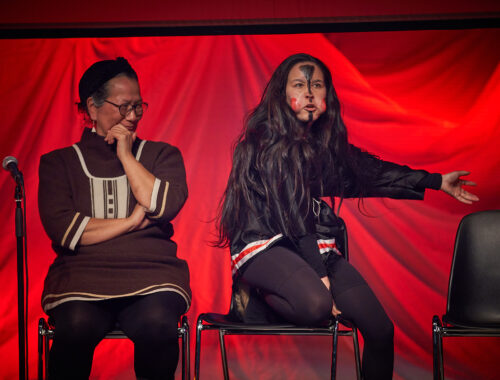
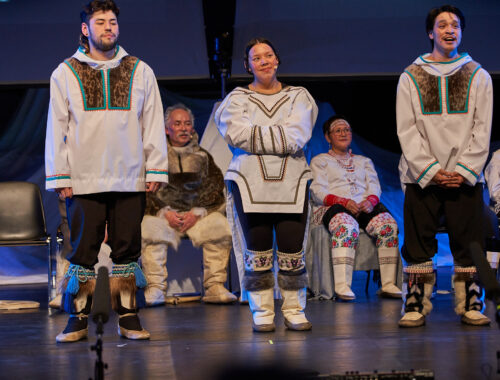
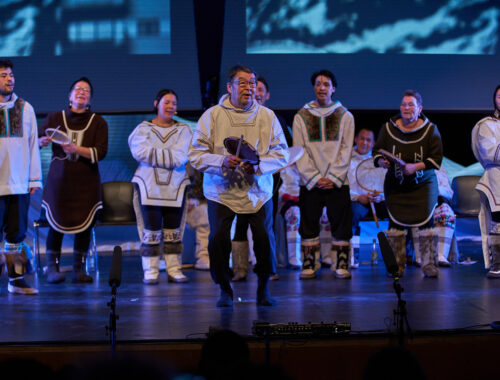
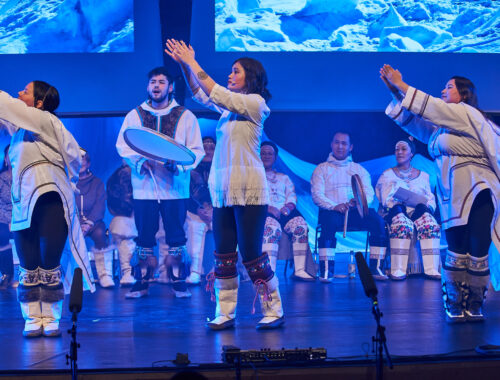
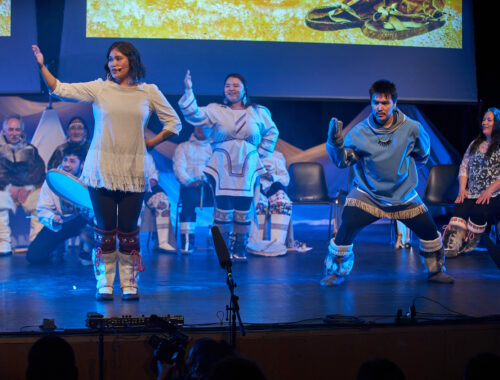
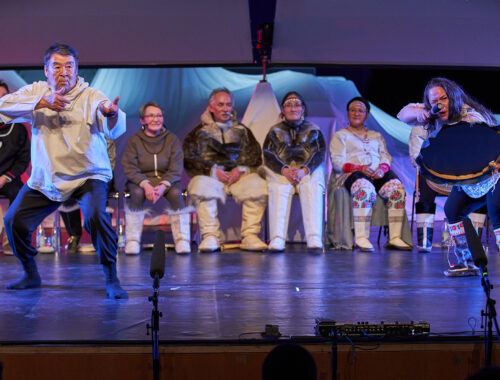

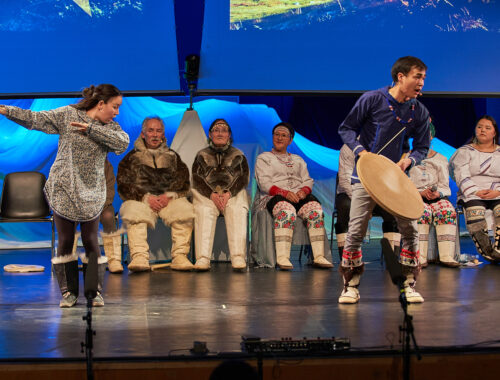
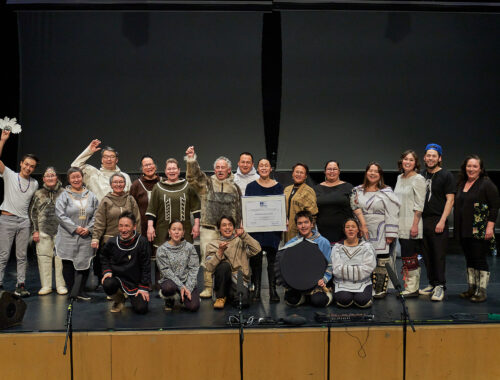
- Arctic perspectives, Culture, Events, Greenland, Identity, Supported projects
- Foto af Vincent Desrosier
Other news

A look back at Suialaa Arts Festival 2025
Suialaa Arts Festival 2025 took place in Nuuk from 23–26 October. The festival is Greenland’s largest recurring cultural event, held every two years. NAPA is proud co-owner of the festival together with Kommuneqarfik Sermersooq. his year, Suialaa unfolded throughout Nuuk with concerts, theatre, dance performances, exhibitions, literary events, seminars, workshops and shared meeting spaces for artists and audiences. Thank you to all artists, volunteers and partners for contributing to an open, inclusive and inspiring festival. We already look forward to next time! Until then, you can view images from this year’s festival in our gallery.
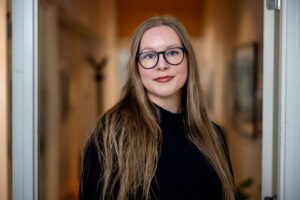
Pauliina Oinonen becomes acting CEO of NAPA
In order to ensure a smooth transition until a new director is employed, it has been decided to constitute an interim CEO in NAPA. Søren Würtz, CEO of NAPA, the Nordic Institute in Greenland, has announced his decision to leave his position in NAPA as
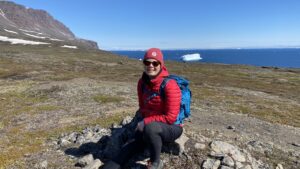
A grateful goodbye and thank you
After a short but memorable time with Anne Mette Gangsøy as director of NAPA, it is soon time to say goodbye to her. We do so with gratitude for all that Anne Mette has done in her time with us. As the director of NAPA,
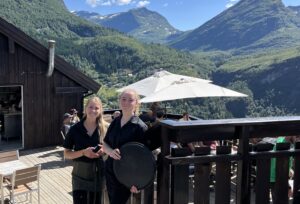
Apply for seasonal jobs throughout the Nordic region with Nordjobb!
Are you between 18 and 30 years old? Can you imagine yourself working on a farm in Iceland, in a cafeteria Norway or as a receptionist in the Faroe Islands? Or maybe as a photography guide in Finnish Lapland? With Nordjobb you can apply for



